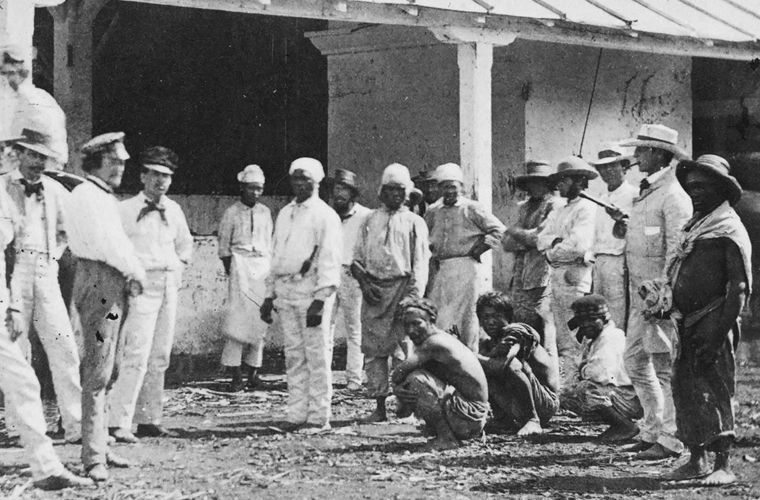The establishment of settlements in the Americas during the 17th century marked the beginning of the plantation system, a significant development in the history of agricultural production and labor in the New World. This system, characterized by the division of land into smaller units under private ownership, had a profound impact on the economic, social, and political landscape of the time.
The plantation system originated in Virginia and subsequently spread to the New England colonies, where it became a dominant feature of agricultural production. Crops such as tobacco, rice, sugar cane, and cotton were cultivated on these plantations, and their production relied heavily on labor-intensive practices. Slaves, predominantly from Africa, were conscripted to work in the fields from sunrise to sunset, enduring grueling eighteen-hour days during harvest time. The harsh conditions extended to women slaves, who worked the same hours as men and were expected to continue working even during pregnancy.
European immigrants who had sought land ownership in America were initially reluctant to work for others, leading to a shortage of labor. To meet the growing demand for labor, planters turned to the purchase of slaves, initially from the West Indies and later directly from Africa. This led to the establishment of bustling slave markets in cities such as Philadelphia, Richmond, Charleston, and New Orleans.
The high death rate among slaves prompted plantation owners to encourage reproduction among their enslaved workforce. Women slaves were expected to begin childbearing at a young age, with the expectation of bearing four or five children by the age of twenty. In some cases, promises of freedom were made to women slaves who produced a certain number of children, further incentivizing childbearing.
The plantation system played a pivotal role in shaping the economic landscape of the South. Large farms specializing in the production of staple crops such as rice, tobacco, cotton, and sugar formed the backbone of the region’s agricultural economy. These crops were highly valued in international trade, allowing the South to participate in an international economy.
The profitability of the plantation system was largely attributed to the use of slave labor. By owning both the land and the labor force, plantation owners were able to minimize costs associated with agricultural production. While there were initial expenses related to the purchase, housing, and feeding of slaves, the absence of daily wages for labor significantly reduced overall production costs. This allowed plantation owners to generate substantial profits from their agricultural endeavors.
The reliance on slave labor fundamentally shaped the structure and operation of plantations. With 20 or more slaves working on a single plantation, the system was characterized by a large and captive labor force dedicated to the cultivation and harvesting of staple crops. The utilization of essentially free labor enabled plantation owners to maximize their control over production and minimize expenses, ultimately driving profitability in the agricultural sector.
The plantation system emerged as a defining feature of agricultural production in the South during the 17th and 18th centuries. Its reliance on slave labor, coupled with the cultivation of valuable staple crops for international trade, positioned plantations as key players in the region’s economy. The legacy of the plantation system continues to have far-reaching implications for our understanding of labor, agriculture, and economic development in the Americas.

